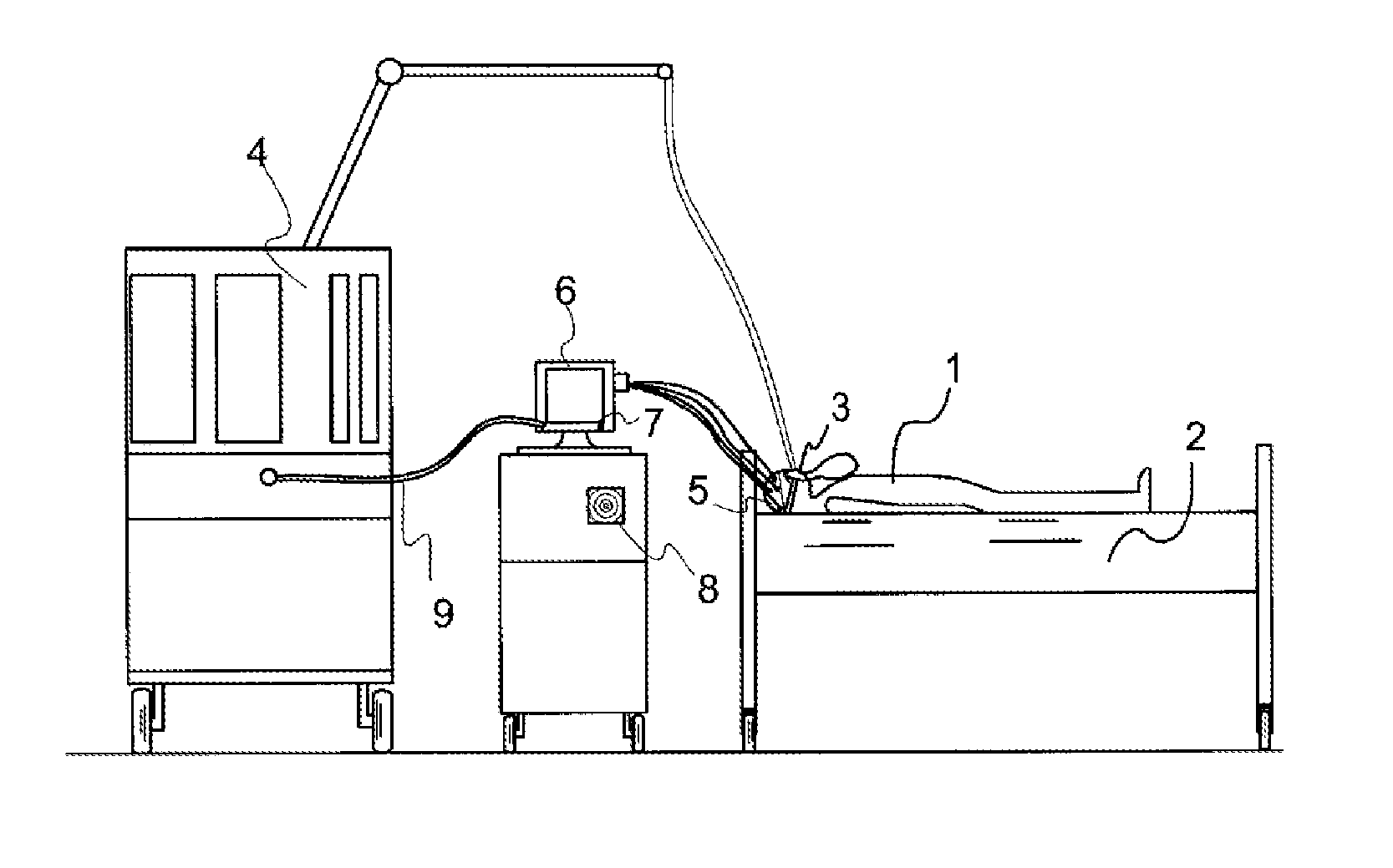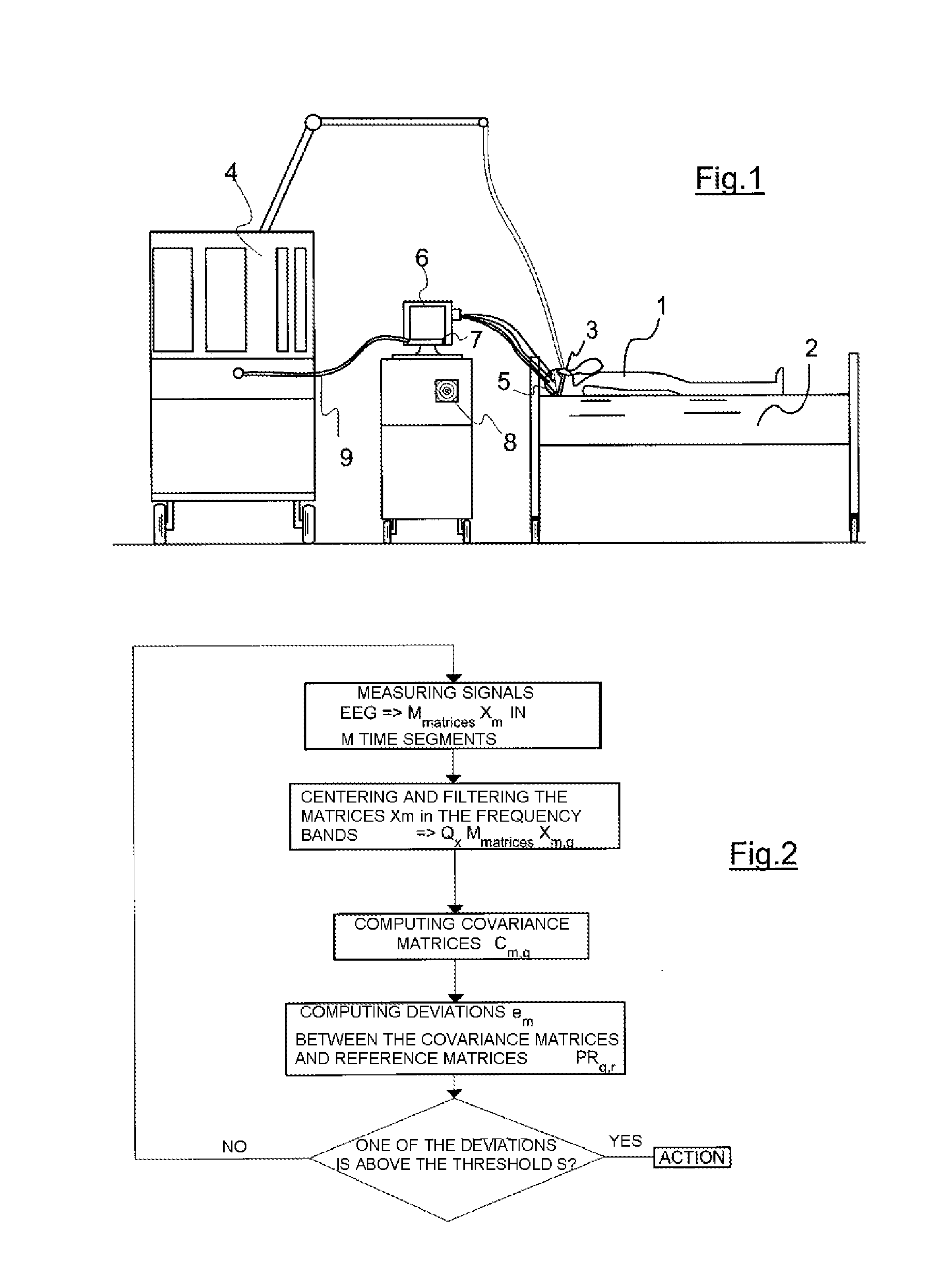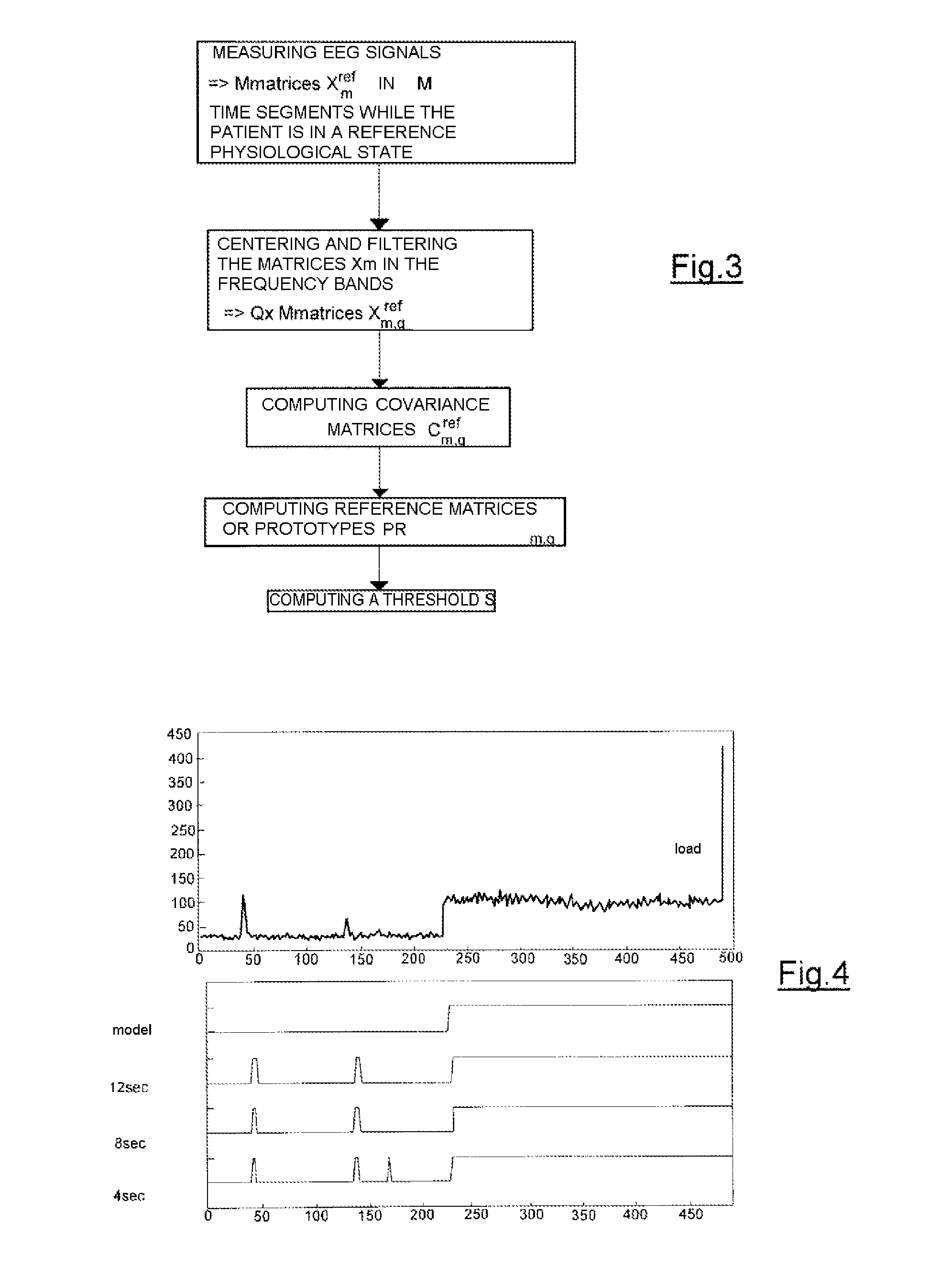Method for characterising the physiological state of a patient from the analysis of the cerebral electrical activity of said patient, and monitoring device applying said method
a monitoring device and patient technology, applied in the field of patient physiological state characterisation from the analysis of the cerebral electrical activity of the patient, can solve the problems of less than one, few, little codified, and no longer in harmony with the ventilator, and achieve the effect of a new approach to the interaction and the characterization of the neural network
- Summary
- Abstract
- Description
- Claims
- Application Information
AI Technical Summary
Benefits of technology
Problems solved by technology
Method used
Image
Examples
Embodiment Construction
[0042]The invention will now be detailed with reference to its application to the detection of discord between a patient and the breathing assistance device to which he or she is connected. It is assumed here that, in the event of discord, the cerebral activity of the patient is modified relative to a reference physiological state in which the patient is in harmony with the breathing assistance device.
[0043]Any cognitive act results from a cooperation between several spatially distributed neural networks (Varela et al., 2001). At the current time, and despite their recent advances, the main cerebral imaging techniques (electro-encephalography, magnetoencephalography, functional magnetic resonance imaging and position emission tomography) provide only a mapping of the cerebral activations, without directly taking into account interactions between these activations.
[0044]The invention is based on the assumption whereby the dynamic links between the neural groups are manifested by the ...
PUM
 Login to View More
Login to View More Abstract
Description
Claims
Application Information
 Login to View More
Login to View More - R&D
- Intellectual Property
- Life Sciences
- Materials
- Tech Scout
- Unparalleled Data Quality
- Higher Quality Content
- 60% Fewer Hallucinations
Browse by: Latest US Patents, China's latest patents, Technical Efficacy Thesaurus, Application Domain, Technology Topic, Popular Technical Reports.
© 2025 PatSnap. All rights reserved.Legal|Privacy policy|Modern Slavery Act Transparency Statement|Sitemap|About US| Contact US: help@patsnap.com



